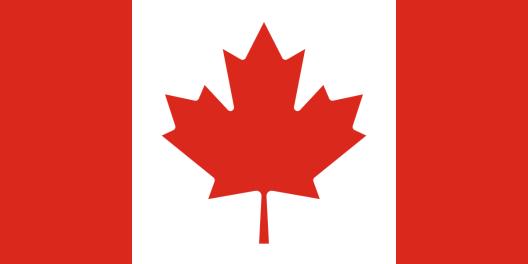This goes
to space
James Webb Space Telescope
Until now, information about the James Webb Space Telescope’s first full-color images and science data – which will be publicly released on July 12th – has been a closely guarded secret. But during a media briefing on June 29th, scientists and officials shared a few enticing details.
First, there won’t be just one image, as has been common in “first light” releases for previous telescopes.
“We will have a package that will consist of a number of full-color images,” said Klaus Pontoppidan, JWST project scientist at the Space Telescope Science Institute (STScI) in Baltimore, home to Webb’s science and mission operations. “Each of them will reveal different aspects of the infrared Universe in unprecedented detail and sensitivity.”
One of those images will be the deepest image of our universe that has ever been taken, said NASA Administrator Bill Nelson. “Just think about that,” he pondered, “this is farther than humanity has ever looked before. And we're only beginning to understand what Webb can and will do.”
So, think of the previous deepest image, the Hubble Space Telescope’s Ultra Deep Field – which revealed over 10,000 previously unseen distant galaxies in a tiny region of the sky thought to be devoid of objects. These ancient galaxies existed between 400 and 800 million years after the Big Bang. But as the universe expands and the older and most distant galaxies speed away from us, their light gets redshifted farther into the infrared, making them dimmer and invisible to the capabilities of previous telescopes.
That’s why JWST was built.
Its ability to see longer wavelengths in the infrared with incredible sharpness will bring those early stars and galaxies into focus, revealing details of how our universe began and formed.
“In comparison to Hubble, Webb does go deeper and certainly sharper in the infrared, especially the longer wavelengths like mid-infrared, bringing the universe into high definition,” said Jonathan Gardner, Webb deputy senior project scientist, at NASA’s Goddard Spaceflight Center. And in terms of the visual appeal of the images, Gardner added, if you like looking at Hubble images, you’re going to REALLY like seeing the new Webb images.
“But the real difference is the new scientific information,” he said, “and opening up the universe in a way that we've really never seen before.”
In another surprise at the briefing, Thomas Zurbuchen, associate administrator for NASA’s Science Mission Directorate, revealed what to expect for the first non-image science data from JWST.
“I can confirm that part of the July 12th release, we will share Webb’s first exoplanet spectrum,” Zurbuchen said. “Right from the beginning, we are going to be looking at these worlds out there, the ones that keep us awake at night as we look into the starry sky and wonder if there is life elsewhere.”
When Webb was initially designed, scientists had only found a few exoplanets — planets that orbit other stars. Now, we know of over 4,000 exoplanets, and one of Webb’s major focuses will be to study the atmospheres of these distant worlds. Webb’s instruments can look for signatures of water, carbon dioxide, and even methane, all of which could point to the possibility of life.
And Pontoppidan revealed even more details of what awaits: Webb’s first images will also show colliding galaxies, and how these cataclysmic collisions drive the process of star formation. There will be images of young stars being born in their natal clouds of gas and dust, as well as stars dying spectacularly in a supernova.
“I'm really looking forward to revealing the first color images to the world,” Pontoppidan said. “But I also want to emphasize this is really only the beginning; we're only scratching the surface, we have in the first images, just a few days’ worth of observations. We’ll have many more years of observations, and we can only imagine what that will be. The next exciting phase is really to get the data out to the thousands of scientists around the world so they can dig into it. And then we can start a shared journey of discovery.”
Careful planning for Webb’s first full-color images and data release has been underway for a long time, conducted in secret by a small committee. In fact, Massimo Stiavelli, head of the Webb telescope mission office at STScI told me just a few months ago that even he didn’t know what the proposed targets would be. All he knew was that the main goal of the first images would be to illustrate the capabilities of the new observatory, showcasing the telescope’s powerful instruments and previewing the science mission to come.
The committee is made up of members from the international partnership behind the telescope: NASA, ESA, the Canadian Space Agency, and STScI. One of the challenges of planning the first images far in advance is that Webb can only see certain parts of the sky at a given time. The timeline of what Webb would be seeing when the instruments were finally ready to start taking data would depend on what day the spacecraft launched from Earth.
Additionally, the committee had to account for the possibility of any snafus in the telescope’s month-long journey to Lagrange point 2, 1.5 km (1 million miles) from Earth, or the six-month-long period of aligning the 18 segments of the 6.5 meters (21 feet) wide mirror and commissioning the four science instruments. (In case you haven’t been following the news, the entire process has gone perfectly.)
The committee came up with a potential list of 70 targets, taking inspiration from what previous space telescopes like Hubble and the Spitzer Space Telescope have done before. Could possible targets be the Pillars of Creation in the Eagle Nebula, the Crab Nebula, Andromeda, or the Sombrero Galaxy?
“The committee essentially prioritized this list in such a way that once we knew when we would be able to take the data,” Pontoppidan explained, “We could go down that prioritized list and make the highest prioritized targets that were visible at that time.”
The first science images were actually taken on the summer solstice, June 20th, and the team is still gathering images and data with the new telescope. But taking images with Webb is nothing like taking a picture with your smartphone. It includes a complex process of commanding the telescope to get in position, acquire the data, send the data to Earth, process that data, then assemble them into colorful images.
“We have a team of absolutely amazing people, of experts, who have been working round the clock on this project,” Pontoppidan said, “so that we can deliver a fantastic package on July 12.”
What will we see on July 12? NASA Deputy Administrator Pam Melroy said she had a chance to preview just a few of the images that will be showcased. “What I have seen just moved me,” Melroy said, “as a scientist, as an engineer, and as a human being.”
Zurbuchen said he was moved to tears.
"It’s really hard to not look at the universe in a new light and not have a moment that is deeply personal," he said. "It’s an emotional moment when you see nature suddenly releasing some of its secrets. And I would like you to imagine and look forward to that."
Written for Supercluster by Nancy Atkinson
JWST Details
The James Webb Space Telescope, also called JWST, James Webb, or Webb, is an international, flagship astrophysics observatory that traces its beginnings to 1996.
It is a collaboration between 14 nations, including Austria, Belgium, Canada, Denmark, France, Germany, Ireland, Italy, The Netherlands, Spain, Sweden, Switzerland, the United Kingdom, and the United States through the space agencies of NASA, CSA, and ESA.
According to NASA "In addition: Finland, Greece, Luxembourg, Norway, Poland, Portugal, The Czech Republic and Romania are members of the European Space Agency and are also contributing to the success of Webb."
Over a 20-year development process, Webb was built to be the most complex and powerful telescope ever assembled. Complexity was necessary to achieve the scientific goals while also fitting within the mission weight and size limits.
It entered final testing for launch in 2016, tests that included taking Webb through the slow and methodical 344-step deployment sequence it will have to do once in space.
Why so many deployments? James Webb is far too large at 20.1 m x 14.1 m to fit inside the payload fairing of any rocket currently flying.
To make itself as small as possible to fit into the large and roomy payload fairing of the Ariane 5, James Webb has to fold up for its ride to space.
Thankfully, while JWST will need to perform over 40 primary deployments and 178 device releases, not all of those are mission-ending should they not work properly. There are scenarios where a not-fully-deployed James Webb will still be able to gather valuable science
Contrary to public perception, Webb is not a replacement to the Hubble Space Telescope, and in fact, both will work together during the early portions of Webb's life.
What's more, the two telescopes "see" in different wavelengths or frequency ranges -- meaning they can provide different and complementary data to scientists regarding the same event.
Once operational, scientists will use Webb's four instruments to see back to "first light," the period of time in which the Big Bang occured as well as the first stars and galaxies began to form.
Seeing this far back will help us understand how the universe started and how it behaved in its early years.
Much closer to the present, Webb will also analyze exoplanet atmospheres in systems near Earth, study how planetary systems form and evolve, assist with the search for potential large planets in the outer regions of Earth's solar system, and search for chemical signatures potentially indicating life in nearby exoplanet systems.
Photo Credit: NASA

On this
rocket
Ariane 5 - ECA
Meet the European Space Agency's heavy-lift, workhorse rocket.
Ariane 5 is operated by Arianespace and carries a per launch price tag of approximately $168 million (USD). However, Arianespace offers ride-shares for two large payloads on the same mission.
Stats
Height: 46–52 m (151–171 ft)
Diameter: 5.4 m (18 ft)
Mass: 777,000 kg (1,713,000 lb)
Stages: 2
The two payloads ride one on top of the other, with the upper payload customer paying $101 million (USD) and the lower payload customer paying $67 million (USD).
This makes the price of an Ariane 5 launch competitive with other heavy-lift rockets from a "what the customer pays" perspective.
Ariane 5 debuted on June 4th, 1996, and has undergone five upgrades over the years.
Of those five variants, one remains in operation: the Ariane 5 ECA (Evolution Cryotechnique type A).
Over its service life, the rocket has launched hundreds of satellites as well as five cargo resupply missions to the International Space Station.
Arianespace and the European Space Agency are in the process of building Ariane 5's successor, Ariane 6, which will be more affordable than Ariane 5.
At this time, the rocket will fly until at least 2023.
Photo: An Ariane 5 lifts off from South America. Credit: Arianespace

From this
spaceport
ELA-3 - Guiana Space Centre - Kourou, French Guiana
ELA-3 (Ensemble de Lancement Ariane 3) is a launch pad built specially for the Ariane 5 rocket - the European Space Agency's (ESA's) and Arianespace's heavy-lift workhorse.
Built in the mid-1990s, it was first used on June 4th, 1996, for the maiden launch of Ariane 5.
ELA-3 is located in the Guiana Space Centre (French: Centre Spatial Guyanais), a French and European spaceport located near Kourou in French Guiana near the northern tip of South America.
The space centre itself has been operational since 1968 and has hosted launches for the ESA, the French National Centre for Space Studies, and commercial companies Arianespace and Azercosmos.
A total of 9 different rockets types have launched from the Guiana Space Centre, including three active rockets and six retired vehicles.
The current rocket fleet at the space center is comprised of the Ariane 5 for heavy payloads, the Russian-provided Soyuz 2.1 for medium-mass payloads, and Vega for smaller satellites.

Here's where to view James Webb Space Telescope
Viewing Sites
- Guiana Space Museum
- Plages des Roches beach
- Place des Amandiers
- Guiana Space Centre
Know Before You Go
ELA-3 (Ensemble de Lancement Ariane 3) is a launch pad built specially for the Ariane 5 rocket - the European Space Agency's (ESA's) and Arianespace's heavy-lift workhorse vehicle.
Built in the mid-1990s, it was first used on June 4, 1996 for the maiden launch of Ariane 5.
ELA-3 is located in the Guiana Space Centre (French: Centre Spatial Guyanais), a French and European spaceport located near Kourou in French Guiana near the northern tip of South America.
The space centre itself has been operational since 1968 and has hosted launches for the ESA, the French National Centre for Space Studies, and commercial companies Arianespace and Azercosmos.
A total of 9 different rocket types have launched from the Guiana Space Centre, including three active rockets and six retired vehicles.
The current rocket fleet at the space center is comprised of the Ariane 5 for heavy payloads, the Russian-provided Soyuz-STB for medium-mass payloads, and Vega for smaller mass payloads.
The Ariane 6, currently under development, will launch from CSG beginning in the early 2020s.
GET THE SUPERCLUSTER APP
THE SUPERCLUSTER PODCAST
A podcast exploring the amazing milestones that changed space history, the wildest ideas that drive our future, and every development in this new Golden Age of Space.
Donate to support
Your support makes the Astronaut Database and Launch Tracker possible, and keeps all Supercluster content free.
SupportCOPYRIGHT 2021 SUPERCLUSTER LLC

















